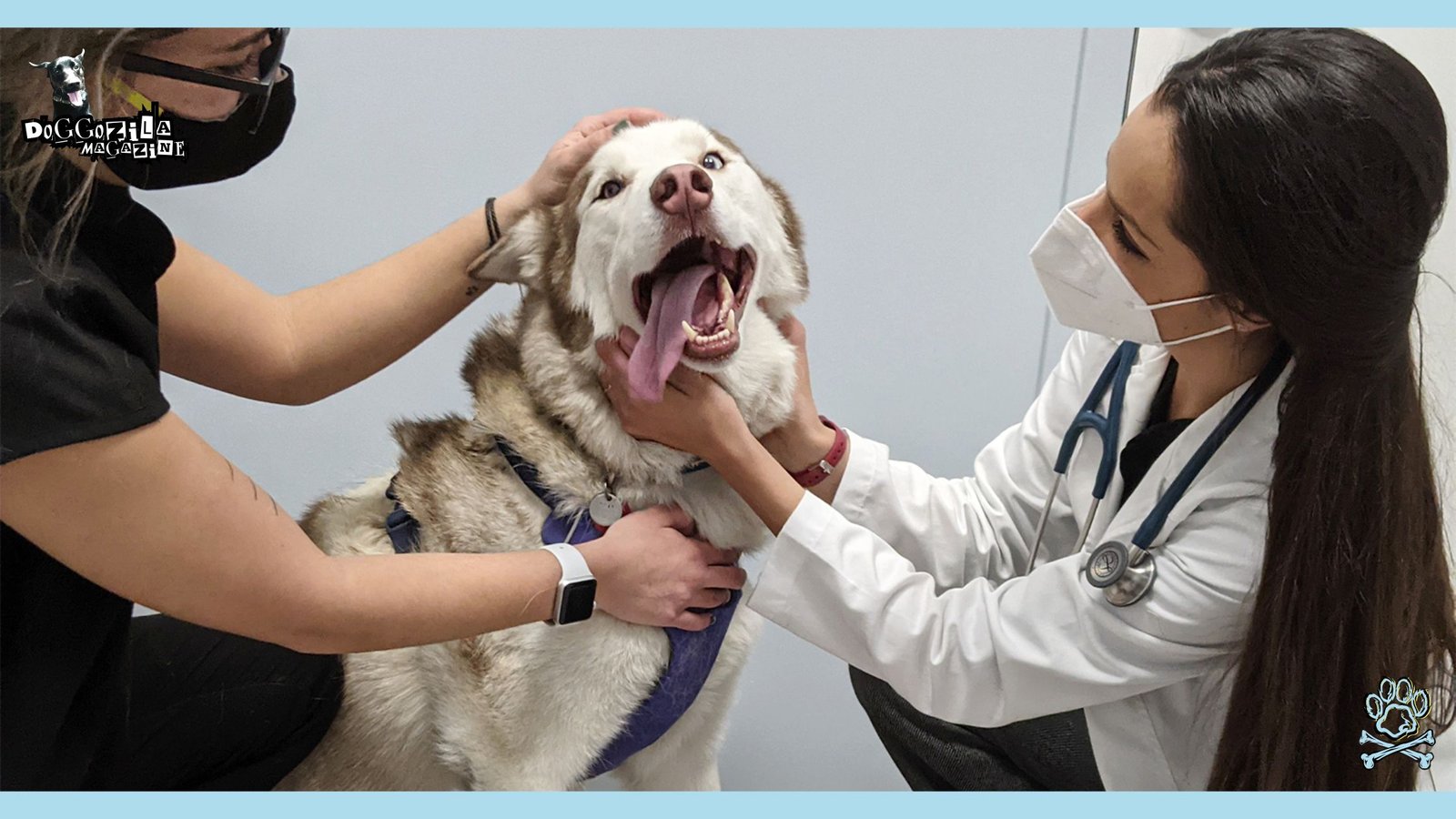
BEST PRACTICES TO IMPROVE DOG’S BRAIN HEALTH: INTRODUCTION TO NEUROLOGICAL ISSUES IN DOGS
One of the most common neurological issues in dogs is epilepsy. Epilepsy is a chronic condition characterized by recurrent seizures. These seizures can range in severity and frequency, and they can significantly impact a dog’s quality of life. If your dog has been diagnosed with epilepsy, it is crucial to work closely with your veterinarian to develop a management plan.
Dog’s Spinal Cord Disease called Degenerative Myelopathy
In addition to epilepsy, dogs can also suffer from other neurological conditions such as degenerative myelopathy, which affects the spinal cord, and vestibular disease, which affects the inner ear. These conditions can cause symptoms such as difficulty walking, loss of balance, and disorientation. It is important to seek veterinary care if you notice any of these signs in your dog.
When it comes to improving brain health in dogs, there are several best practices that pet owners can follow. First and foremost, providing a balanced and nutritious diet is essential. The brain requires a variety of nutrients to function optimally, including omega-3 fatty acids, antioxidants, and vitamins. Feeding your dog a high-quality dog food that is specifically formulated to support brain health can help ensure they are getting the nutrients they need.
Regular exercise is another crucial aspect of maintaining brain health in dogs. Physical activity not only helps keep dogs physically fit but also stimulates their brains. Activities such as walking, running, and playing fetch can help keep your dog mentally sharp and prevent cognitive decline.
Dog’s Brain Health
Mental stimulation is equally important for dogs’ brain health. Engaging your dog in activities that challenge their cognitive abilities can help keep their brains active and healthy. Puzzle toys, obedience training, and interactive games are all great ways to provide mental stimulation for your furry friend.
In addition to diet, exercise, and mental stimulation, regular veterinary check-ups are essential for monitoring your dog’s brain health. Your veterinarian can perform a thorough examination and recommend any necessary tests or treatments. They can also provide guidance on managing any existing neurological conditions and offer advice on preventive measures.
🔑 Key Points: Taking a proactive approach to your dog’s brain health is crucial for ensuring their overall well-being. By following these best practices and working closely with your veterinarian, you can help improve your dog’s brain health and provide them with a happy and fulfilling life.

UNDERSTANDING NEUROLOGICAL ISSUES IN DOGS
Before we delve into the strategies to address neurological issues in dogs, it is crucial to have a basic understanding of the common conditions that can affect their brain health.
Most Prevalent Neurological Issues In Dogs
- Epilepsy: A chronic disorder characterized by recurrent seizures. Epilepsy can be caused by various factors, including genetics, brain injury, or underlying health conditions. Seizures can range in severity, from mild episodes of staring or twitching to more severe convulsions. Treatment for epilepsy often involves medication to control and manage seizures.
- Canine Cognitive Dysfunction (CCD): Similar to dementia in humans, CCD is a degenerative condition that affects older dogs. It is characterized by cognitive decline, memory loss, disorientation, and changes in behavior. Dogs with CCD may exhibit signs such as increased confusion, decreased social interaction, changes in sleep patterns, and house soiling. While there is no cure for CCD, there are management strategies that can help slow down the progression of the disease and improve the quality of life for affected dogs.
- Brain Tumors: These abnormal growths can cause a range of neurological symptoms in dogs. The symptoms can vary depending on the location and size of the tumor, but common signs include seizures, changes in behavior, loss of coordination, difficulty walking, and changes in appetite. Treatment for brain tumors may involve surgery, radiation therapy, or chemotherapy, depending on the type and stage of the tumor.
Other Dangerous Neurological Issues In Dogs
- Stroke: A disruption of blood flow to the brain, resulting in neurological deficits. Strokes in dogs can be caused by blood clots, bleeding in the brain, or a lack of oxygen. Symptoms of a stroke may include sudden weakness or paralysis, loss of balance, head tilt, abnormal eye movements, and changes in behavior. Treatment for strokes in dogs focuses on supportive care and addressing the underlying cause, if possible.
- Meningitis: Inflammation of the membranes surrounding the brain and spinal cord. Meningitis in dogs can be caused by bacterial, viral, or fungal infections. Common signs of meningitis include fever, neck pain or stiffness, sensitivity to touch, lethargy, and changes in dog behavior. Treatment for meningitis typically involves antibiotics or antifungal medications, depending on the underlying cause.
These are just a few examples of the neurological conditions that can affect dogs. It is important to consult with a veterinarian for an accurate diagnosis if you suspect any issues with your dog’s brain health. Early detection and appropriate treatment can significantly improve the prognosis and quality of life for dogs with neurological conditions.

Quality Sleep
Adequate sleep is essential for maintaining optimal brain health in dogs. During sleep, the brain undergoes important processes such as memory consolidation and repair. Ensure that your dog has a comfortable and quiet sleeping area where they can rest undisturbed. Establish a consistent sleep routine to promote healthy sleep patterns.
Socialization
Socialization is crucial for a dog’s overall well-being, including their brain health. Regular interaction with other dogs and humans helps stimulate their brain and promotes positive mental health. Encourage your dog to participate in social activities such as visits to the dog park or playdates with other friendly dogs.
Monitoring for Signs of Cognitive Decline
As dogs age, they may experience cognitive decline, similar to humans with conditions like dementia. It is important to monitor your dog for any signs of cognitive decline, such as confusion, disorientation, changes in behavior, or difficulty learning new tasks.
If you notice any concerning symptoms, consult with your veterinarian for further evaluation and guidance. By implementing these expert tips, you can take proactive steps to improve your dog’s brain health and overall quality of life.
🔑 Key Points: Remember, early detection and intervention are key in addressing neurological issues, so stay vigilant and prioritize your dog’s brain health.

TACKLING NEUROLOGICAL ISSUES IN DOGS: BEST PRACTICES FOR IMPROVED BRAIN HEALTH
Neurological issues in dogs can be a cause for concern for pet owners. One of the most common neurological conditions seen in dogs is epilepsy. Epilepsy is a chronic condition characterized by recurrent seizures, which can vary in severity and frequency. These seizures can have a significant impact on a dog’s quality of life. If your dog has been diagnosed with epilepsy, it is essential to work closely with your veterinarian to develop a management plan.
Managing Epilepsy In Dogs
When it comes to managing epilepsy in dogs, there are several best practices that can help improve their brain health and overall well-being. Firstly, it is crucial to ensure that your dog is receiving the appropriate medication. Anticonvulsant medications, such as phenobarbital or potassium bromide, are commonly prescribed to control seizures in dogs with epilepsy. These medications work by stabilizing the electrical activity in the brain, reducing the likelihood of seizures occurring.
In addition to medication, maintaining a consistent routine and minimizing stress can also be beneficial for dogs with epilepsy. Dogs thrive on routine, and having a predictable schedule can help reduce anxiety and potential triggers for seizures. Creating a calm and quiet environment for your dog, especially during times of increased stress or excitement, can help minimize the risk of seizures.
Managing Neurological Issues In Dogs With Healthy Diet
Diet also plays a crucial role in managing neurological issues in dogs. A balanced and nutritious diet can support brain health and reduce inflammation, which may contribute to seizure activity. Consult with your veterinarian to determine the best diet for your dog, taking into consideration any specific dietary needs or allergies.
Regular exercise is another important aspect of managing neurological issues in dogs. Exercise not only helps maintain a healthy weight but also promotes mental stimulation and reduces stress. Engaging in activities that challenge your dog’s brain, such as puzzle toys or obedience training, can help keep their mind active and improve their overall brain health.
Furthermore, regular veterinary check-ups are essential for monitoring your dog’s condition and adjusting their treatment plan if necessary. Your veterinarian may recommend periodic blood tests to ensure that medication levels are within the therapeutic range and to check for any potential side effects. They can also provide guidance and support as you navigate the challenges of managing epilepsy in your dog.
Tackling neurological issues in dogs, such as epilepsy, requires a comprehensive approach that includes medication, routine, stress management, diet, exercise, and regular veterinary care. By implementing these best practices, you can help improve your dog’s brain health and enhance their overall quality of life.
Secondary Seizures
In addition to generalized and focal seizures, dogs with epilepsy may also experience secondary seizures. These seizures are caused by an underlying health condition or trigger, such as a metabolic disorder, toxin exposure, or low blood sugar. It is important to identify and address the underlying cause of these seizures to effectively manage the epilepsy.
Managing epilepsy in dogs involves a combination of medication, lifestyle changes, and ongoing monitoring. Your veterinarian may prescribe anticonvulsant medication to help control the frequency and severity of seizures.
🔑 Key Points: It is crucial to follow the prescribed medication schedule and dosage to ensure its effectiveness.

LIFESTYLE CHANGES CAN ALSO HELP MANAGE EPILEPSY IN DOGS
In addition to medication, making certain lifestyle changes can also help manage epilepsy in dogs.
Lifestyle Changes To Consider
- Providing a consistent routine and environment to reduce stress and anxiety.
- Avoiding triggers that may induce seizures, such as certain foods, loud noises, or bright lights.
- Ensuring your dog gets regular exercise and mental stimulation to promote overall well-being.
- Monitoring your dog closely for any changes in behavior or seizure activity and reporting them to your veterinarian.
Regular veterinary check-ups are essential for dogs with epilepsy. Your veterinarian will monitor your dog’s medication effectiveness, adjust the dosage if necessary, and check for any potential side effects. They may also recommend additional diagnostic tests, such as blood work or imaging, to assess your dog’s overall health and identify any underlying conditions.
Living with a dog with epilepsy can be challenging, but with proper management and support, most dogs can lead happy and fulfilling lives. It is important to work closely with your veterinarian to develop an individualized treatment plan that addresses your dog’s specific needs. By understanding the different types of seizures and implementing appropriate management strategies, you can help your dog live a seizure-free life.
Behavioral Modification
In addition to medication and lifestyle changes, behavioral modification techniques can also play a role in managing epilepsy in dogs. Positive reinforcement training can help reduce stress and anxiety, which may contribute to seizure activity. Teaching your dog relaxation techniques, such as deep breathing and progressive muscle relaxation, can also be beneficial in preventing and managing seizures.
Alternative Therapies
Some dog owners may choose to explore alternative therapies as part of their dog’s management plan. These therapies can include acupuncture, massage, and herbal supplements. While there is limited scientific evidence to support the effectiveness of these treatments, some dog owners have reported positive results. It is important to consult with your veterinarian before incorporating any alternative therapies into your dog’s treatment plan.
Support and Education
Managing epilepsy in dogs can be challenging, both emotionally and physically. It is important to seek support from veterinary professionals and connect with other dog owners who are going through similar experiences. Support groups and online forums can provide a wealth of information and a sense of community. Educating yourself about epilepsy and staying up to date with the latest research can also help you make informed decisions about your dog’s management plan.
Emergency Preparedness
While the goal of a management plan is to reduce the frequency and severity of seizures, it is important to be prepared for emergencies. Make sure to have a plan in place for what to do if your dog experiences a prolonged or severe seizure. This may include having emergency medication on hand and knowing how to administer it. It is also a good idea to inform your veterinarian about your emergency plan, so they can provide guidance and support.
Ongoing Evaluation and Adjustments
Epilepsy is a complex condition, and each dog may respond differently to treatment. It is important to regularly evaluate your dog’s progress and make adjustments to the management plan as needed. Work closely with your veterinarian to monitor your dog’s seizure activity, medication response, and overall well-being. With ongoing evaluation and adjustments, you can optimize your dog’s management plan and provide them with the best possible quality of life.
Doggozila Magazine recommend to continue reading on this important topic at Physio-Vet!









